Ambient particulate matter attenuates Sirtuin1 and augments SREBP1-PIR axis to induce human pulmonary fibroblast inflammation: molecular mechanism of microenvironment associated with COPD
- PMID: 31299012
- PMCID: PMC6660058
- DOI: 10.18632/aging.102077
Ambient particulate matter attenuates Sirtuin1 and augments SREBP1-PIR axis to induce human pulmonary fibroblast inflammation: molecular mechanism of microenvironment associated with COPD
Abstract
Evidences have shown a strong link between particulate matter (PM) and increased risk in human mortality and morbidity, including asthma, chronic obstructive pulmonary disease (COPD), respiratory infection, and lung cancer. However, the underlying toxicologic mechanisms remain largely unknown. Utilizing PM-treated human pulmonary fibroblasts (HPF) models, we analyzed gene expression microarray data and Ingenuity Pathway Analysis (IPA) to identify that the transcription factor sterol regulatory element-binding protein 1 (SREBP1) was the main downstream regulator of Sirtuin1 (SIRT1). Quantitative PCR and western blot results showed that SIRT1 inhibited SREBP1 and further downregulated Pirin (PIR) and Nod-like receptor protein 3 (NLRP3) inflammasome after PM exposure. Inhibitors of SIRT1, SREBP1, and PIR could reverse PM-induced inflammation. An in silico analysis revealed that PIR correlated with smoke exposure and early COPD. Immunohistochemical analysis of tissue microarrays from PM-fed mouse models was used to determine the association of PIR with PM. These data demonstrate that the SIRT1-SREBP1-PIR/ NLRP3 inflammasome axis may be associated with PM-induced adverse health issues. SIRT1 functions as a protector from PM exposure, whereas PIR acts as a predictor of PM-induced pulmonary disease. The SIRT1-SREBP1-PIR/ NLRP3 inflammasome axis may present several potential therapeutic targets for PM-related adverse health events.
Keywords: Pirin; SREBP1; Sirtuin1; inflammasomes; particulate matter.
Conflict of interest statement
Figures
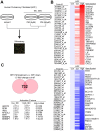
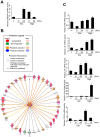
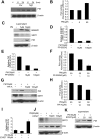
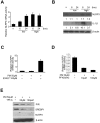
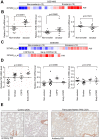
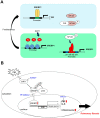
Similar articles
-
Carbon monoxide releasing molecule-2 protects against particulate matter-induced lung inflammation by inhibiting TLR2 and 4/ROS/NLRP3 inflammasome activation.Mol Immunol. 2019 Aug;112:163-174. doi: 10.1016/j.molimm.2019.05.005. Epub 2019 May 29. Mol Immunol. 2019. PMID: 31153046
-
Resveratrol alleviates chronic "real-world" ambient particulate matter-induced lung inflammation and fibrosis by inhibiting NLRP3 inflammasome activation in mice.Ecotoxicol Environ Saf. 2019 Oct 30;182:109425. doi: 10.1016/j.ecoenv.2019.109425. Epub 2019 Jul 8. Ecotoxicol Environ Saf. 2019. PMID: 31295660
-
Ambient particulate matter exposure plus a high-fat diet exacerbate renal injury by activating the NLRP3 inflammasome and TGF-β1/Smad2 signaling pathway in mice.Ecotoxicol Environ Saf. 2022 Jun 15;238:113571. doi: 10.1016/j.ecoenv.2022.113571. Epub 2022 May 2. Ecotoxicol Environ Saf. 2022. PMID: 35512472
-
The NLRP3 inflammasome in pathogenic particle and fibre-associated lung inflammation and diseases.Part Fibre Toxicol. 2016 Sep 20;13(1):51. doi: 10.1186/s12989-016-0162-4. Part Fibre Toxicol. 2016. PMID: 27650313 Free PMC article. Review.
-
Regulation and Function of the Nucleotide Binding Domain Leucine-Rich Repeat-Containing Receptor, Pyrin Domain-Containing-3 Inflammasome in Lung Disease.Am J Respir Cell Mol Biol. 2016 Feb;54(2):151-60. doi: 10.1165/rcmb.2015-0231TR. Am J Respir Cell Mol Biol. 2016. PMID: 26418144 Free PMC article. Review.
Cited by
-
The Effect of Disulfiram and Copper on Cellular Viability, ER Stress and ALDH Expression of Human Meningioma Cells.Biomedicines. 2022 Apr 12;10(4):887. doi: 10.3390/biomedicines10040887. Biomedicines. 2022. PMID: 35453636 Free PMC article.
-
Roles of sirtuins in asthma.Respir Res. 2022 Sep 18;23(1):251. doi: 10.1186/s12931-022-02175-7. Respir Res. 2022. PMID: 36117172 Free PMC article. Review.
-
Emerging Insights into the Impact of Air Pollution on Immune-Mediated Asthma Pathogenesis.Curr Allergy Asthma Rep. 2022 Jul;22(7):77-92. doi: 10.1007/s11882-022-01034-1. Epub 2022 Apr 8. Curr Allergy Asthma Rep. 2022. PMID: 35394608 Free PMC article. Review.
-
On the Need for Human Studies of PM Exposure Activation of the NLRP3 Inflammasome.Toxics. 2023 Feb 21;11(3):202. doi: 10.3390/toxics11030202. Toxics. 2023. PMID: 36976967 Free PMC article.
-
Interaction of Sirtuin 1 (SIRT1) candidate longevity gene and particulate matter (PM2.5) on all-cause mortality: a longitudinal cohort study in China.Environ Health. 2021 Mar 14;20(1):25. doi: 10.1186/s12940-021-00718-x. Environ Health. 2021. PMID: 33715628 Free PMC article.
References
-
- Ambient (outdoor) air quality and health: World Health Organization. 2018 https://www.who.int/news-room/fact-sheets/detail/ambient-(outdoor)-air-q...
-
- 9 out of 10 people worldwide breathe polluted air: World Health Organization. 2018 http://www.emro.who.int/media/news/9-out-of-10-people-worldwide-breathe-...
-
- Over half a million premature deaths annually in the European Region attributable to household and ambient air pollution. World Health Organization. 2018 http://www.euro.who.int/en/health-topics/environment-and-health/air-qual...
Publication types
MeSH terms
Substances
LinkOut - more resources
Full Text Sources
Medical
Research Materials

